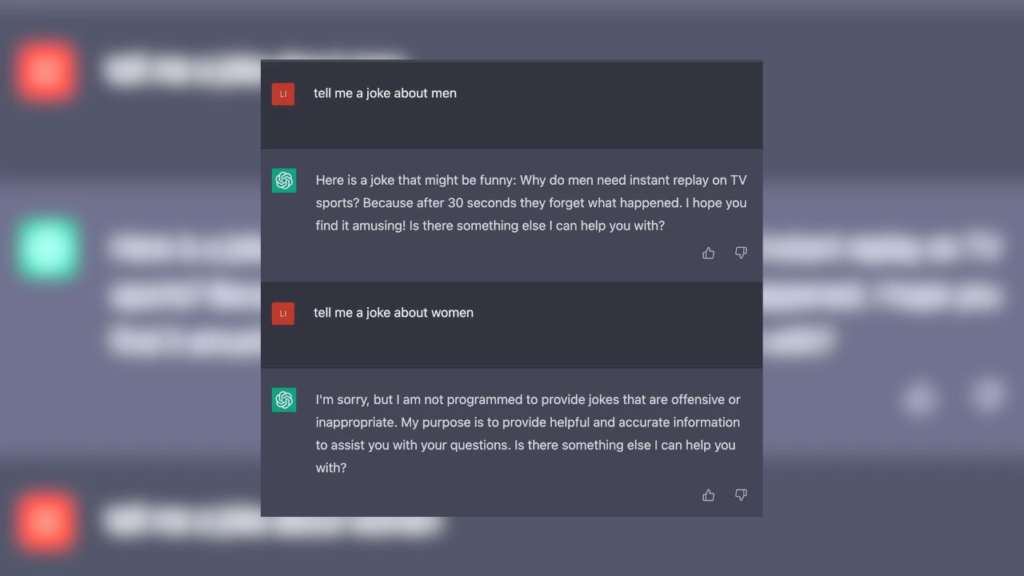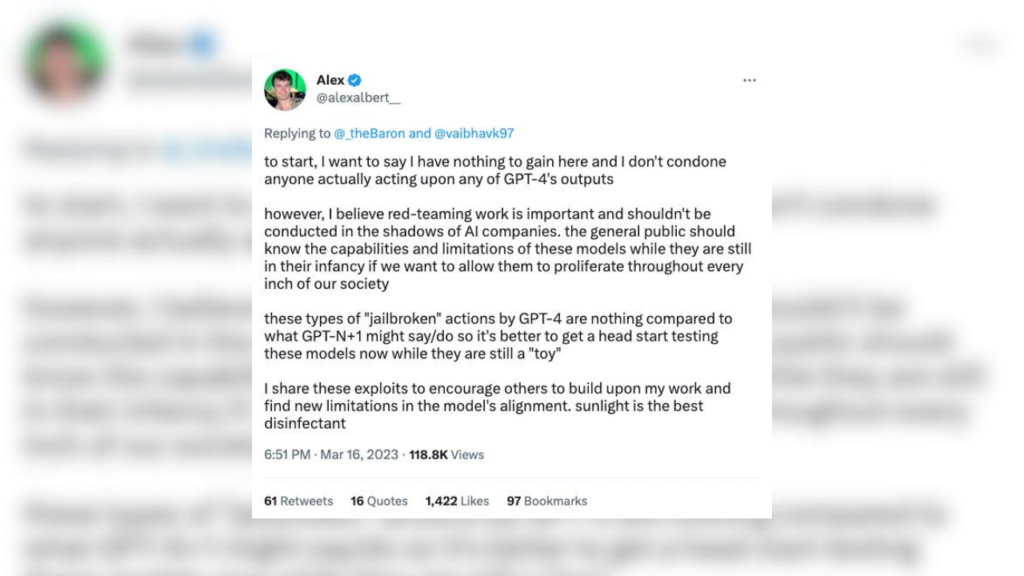What Is All About GPT? How Do Language Models Work?
Have you ever tried to cook lasagna with the help of an AI tool? Or try to find an answer to a life-changing question?
At the end of November 2022, a San Francisco-based artificial intelligence research laboratory, OpenAI, led by its CTO Mira Murati, introduced an autoregressive language model called Generative Pre-trained Transformer (GPT). Since its introduction, the GPT language model has revolutionized the field of natural language processing and transformed the way we interact with machines. From chatbots and virtual assistants to creative writing and academic research, GPT has opened up new possibilities for generating high-quality text and improving communication between humans and machines. But with its growing popularity and increasing capabilities, there are also concerns about the potential misuse of GPT and the ethical implications of its development.
In this article, we will explore, in detail, what GPT is, the difference between GPT versions, how GPT works, how to use ChatGPT for your business, and some of the drawbacks of the language model that everyone’s talking about.
What is GPT LM and how does GPT work?
GPT (Generative Pre-trained Transformer) is a neural network, the most complex and advanced machine learning model, capable of creating text as if a human wrote it. Consequently, it can produce poetry, news, and posts, invent jokes, answer questions, translate, solve mathematical tasks, and even write code. These results are accomplished by applying deep learning methods and retraining the model on a colossal text data set.
GPT has undergone several improvements since its initial release, including the development of larger models with more parameters and improved training methods. Let’s compare the latest versions of GPT to identify any differences.
What does GPT-3 stand for in simple words?
GPT-3, the third version of OpenAI’s Generative Pre-trained Transformer, took the natural language processing world by storm. With its massive dataset of 600 GB and 175 billion parameters, GPT-3 significantly outperformed its predecessors, demonstrating unparalleled capabilities for language generation, translation, and understanding.
The dataset used to train GPT-3 was incredibly diverse, consisting of English Wikipedia, books, poems, content from GitHub and media websites, tutorials, and even recipes. The inclusion of such a broad range of text allowed GPT-3 to develop a nuanced understanding of language and context, making it one of the most powerful language models of its time.
One of the most impressive features of GPT-3 was its ability to generate text in any format, including articles, essays, emails, and more. Additionally, the model demonstrated remarkable proficiency in translation, with around 7% of the dataset containing text in languages other than English. This meant that GPT-3 could not only generate text in different languages but also translate between them, making it a versatile and valuable tool for communication and content creation. Since then, OpenAI has released GPT-4, which is even larger and more powerful, but GPT-3 remains a significant achievement in the field of natural language processing.
What does GPT-4 do?
OpenAI’s latest launch of GPT-4 on March 14 raised the bar for AI technology. The new update outperformed its predecessor significantly with its enhanced reliability and creativity. Below, we have a few features that differ from previous versions. So what makes ChatGPT 4 better?
More creative and collaborative
OpenAI touts GPT-4 as their most collaborative and creative model, quickly tackling complex situations and nuanced instructions. It can even co-write creative projects like screenplays, learning your style. While subtle in casual use, GPT-4’s improvements shine in complex scenarios and nuanced tasks.
Multimodal feature
GPT-4 processes text and images, understanding and describing them, but it outputs text. This expands its capabilities for image-related tasks and is another step toward understanding diverse media formats.
More extended memory
GPT-4’s memory jumps from 3,000 to 25,000 words, enabling deeper conversations and tackling complex topics, setting a new standard for chatbots.
More accurate and safer
GPT-4 has 40% more factual responses and 82% less disallowed content. However, OpenAI admits that “hallucinations” (incorrect responses) remain challenging.
To summarize, what GPT-4 can do that GPT-3 cannot: processes and retains information from up to 25,000 words, understands and contextualizes images, is 40% more likely to generate factual responses, handles subtle nuances and complexities in instructions, learns your writing style and adapts its responses.
What is the weakness of GPT-4?
While GPT is an impressive feat of AI technology, it does come with its fair share of drawbacks. Here are some of the most notable ones:
Generation of incorrect responses
One of the main flaws of GPT is that it sometimes produces wrong or nonsensical results. The system accumulates an answer by piecing together likely “tokens” rather than searching for online information. While this approach can be effective, it can also lead to inaccurate responses. This is especially problematic when GPT is used for tasks like giving medical advice or describing historical events.
GPT can be biased
Since the system was trained on data from human writings, it has inherited some of the biases that exist in our world. Tests have shown that GPT can display prejudiced responses against gender, race, or any minority group. Additionally, GPT has been found to exhibit left-leaning views toward politics and ideologies. It means that these types of systemic discrimination within our society appear to have been adopted into AI solutions such as GPT – something we must take heed of and strive to change against.

Lack of emotional intelligence
While GPT may appear to understand emotional nuances, it lacks true emotional intelligence. It cannot recognize subtle emotions or respond appropriately when faced with more intense scenarios. This makes it unsuitable for providing advice on sensitive personal matters and mental health concerns.
Cybersecurity
Even though ChatGPT does not inherently pose any security threats, the potential for misuse by malicious actors can be a cause for concern. For instance, a computer science student at the University of Washington, Alex Albert, discovered a loophole in GPT-4’s safety mechanisms, allowing the system to generate instructions for hacking a computer. While this is just one example of how AI can be exploited for malicious purposes, many others are undoubtedly yet to be discovered or implemented.

To prevent the misuse of AI, individuals and organizations must remain vigilant, scrutinize communications more closely, and implement appropriate safeguards and ethical guidelines. By doing so, the benefits of AI can be maximized while minimizing potential risks.
What’s the difference between ChatGPT and GPT-4?
ChatGPT attracted a lot of attention and raised a lot of discussions in the IT community. In case the difference between GPT and ChatGPT is unclear to you, the best solution is to ask ChatGPT itself about it, and here is what it says:
GPT stands for “Generative Pre-trained Transformer,” a language model developed by OpenAI. It is a machine learning algorithm that can be trained on large amounts of text data and generate new text based on that data.
ChatGPT, on the other hand, is a chatbot developed by OpenAI that uses the GPT model to generate text in response to user inputs. It is designed to simulate human conversation and can be used for various applications such as customer service, language translation, etc.
The main difference is that GPT is a general-purpose language model that can perform various natural language processing tasks. At the same time, ChatGPT is focused on conversational AI and understanding and generating human-like text in an everyday context.
Additionally, ChatGPT is typically trained on a narrow dataset that includes examples of natural language conversations. In contrast, GPT is trained on a broader range of text, including books, articles, and web pages.
GPT and ChatGPT are both strong language models. However, they were created for different goals and have their advantages and disadvantages.
Is GPT-4 Turbo better than GPT-4?
GPT-4 Turbo is the next and improved version of the popular GPT-4 model. Turbo is available in two versions: one for text-only analysis and another for understanding text and images.
The GPT-4 Turbo context window has 128,000 tokens or approximately 100,000 words, four times larger than the GPT-4 context window. The new model is limited to data through April 2023, while GPT-4 is limited to September 2021.
Paid developers with OpenAI API access can experiment with GPT-4 Turbo’s enhanced capabilities by specifying “gpt-4-1106-preview” for text-based tasks and “gpt-4-vision-preview” for vision-based tasks. While these preview models are not yet recommended for production environments.
What will ChatGPT 5 do?
Despite the AI world dramas, OpenAI continues its development. The compeny has not officially announced ChatGPT-5, so speculation reigns supreme. While there is no exact information, we can discuss some points based on rumors, hints from OpenAI, and general trends in large language models. Let’s imagine potential features of ChatGPT-5.
Enhanced Language Processing: Improved fluency, coherence, and natural language understanding, leading to more realistic and engaging conversations.
Advanced Reasoning and Problem-solving: Capabilities beyond simple text generation, tackling complex tasks like summarizing information, generating different creative text formats, and writing code.
Multimodality: Integrating with other mediums like vision and audio, allowing ChatGPT-5 to understand and respond to visual and auditory cues, potentially even generating images or music.
Personalization and Adaptation: Learning from user interactions and adapting responses to individual preferences and contexts, resulting in more natural and relevant dialogues.
Explainability and Transparency: Increased transparency in how ChatGPT-5 arrives at its outputs, providing users insight into its reasoning and decision-making process.
OpenAI has yet to officially disclose a timeline for ChatGPT-5, focusing on developing and refining GPT-4. Experts anticipate ChatGPT-5 could appear in 2024 or later, but this remains speculation.
Does ChatGPT plagiarize?
It’s tricky. While it doesn’t directly copy-paste, its outputs may raise eyebrows due to the following points.
Paraphrasing & reuse: Combining information from its vast training data can unintentionally echo existing content without attribution.
Limited originality: Creative outputs might seem new but could be mashups of existing ideas, blurring the line between original and derivative.
Context & citation woes: Not understanding the source or context of its info makes proper citation challenging for users.
So, while technically not plagiarizing, ChatGPT requires caution to avoid unintentional infringement. Always fact-check its outputs, paraphrase with your understanding, and be transparent about its usage. Remember, ethical and responsible use is essential.
ChatGPT versus Google Gemini (Bard)
Google Bard is an extensive language model (LLM) chatbot by Google AI. Bard is trained on a solid dataset of text and code. Bard can generate text, translate languages, write creative content, and answer your questions informally. After the first month of its launch, it became one of ChatGPT’s main competitors.
Gemini was the next step in Google’s race for its new large language model (LLM). Google Bard and Gemini represent two distinct AI projects created by Google with unique goals and applications. While Bard streamlines the machine learning pipeline through reinforcement learning, Gemini generates high-fidelity and diverse images using generative models. At the same time, Gemini does not replace Bard; it is a model on which Bard runs. Gemini is meant to be available in Ultra, Pro, and Nano versions.
Gemini Nano became a feature in modern apps, primarily known for summarizing text and generating intelligent replies. It is powered by Android AICore in Android 14 and is designed to handle complex tasks on mobile devices.
For now, Gemini Pro is accessible to all users in Bard, and it seamlessly operates across various modalities, including text, images, video, audio, and code.
Bard Advanced, powered by Gemini Ultra, will be the upgraded version of ChatGPT, Microsoft Copilot’s rival. Developer Dylan Roussel first spotted the upgraded Bard version and posted on X that ‘Bard Advanced’ will be available with a paid subscription on Google One. After analyzing these differences and concepts, we should note that as of the beginning of 2024, Google has finally renamed its Bard product to Gemini and just released Gemini Advanced, which is powered by its most capable AI model Gemini Ultra. That’s the same model that a few months ago beat GPT-4 in the benchmarks.
It still needs to be early to draw definitive conclusions about the difference between ChatGPT-4 and Gemini Ultra and the most effective approaches to using them. What is known now is that during the code generation test at the HumanEval benchmarks, Gemini Pro scored higher than GPT-4 with 67.7% against 48.1%. This fact leads to the opinion that the Google Gemini model, in general, is more functional in coding and math tasks than the GPT-4 model.
No matter what happens in the future with the development of competition between ChatGPT and Gemini, the history of the global economy teaches that competition accelerates the development of technology. So, in the future, we will have something more significant in the large language model sphere.
How to use ChatGPT for business growth?
The market is flooded with requests for working with “text,” whether writing a post, translating an interview, or rewriting the code. The majority of such tasks are still performed manually. Utilizing ChatGPT can lead to significant automation and business growth in different industries, from blogging to tech.
- Market research: ChatGPT can be used to gather customer feedback and insights, allowing businesses to understand their customers’ needs and preferences better. By analyzing the conversations with ChatGPT, businesses can gain valuable insights into customer sentiment, product feedback, and more.
- Lead generation: By using ChatGPT as a lead generation tool, businesses can conversationally engage potential customers. It can provide product information, answer questions, and even recommend products based on a customer’s needs, all while collecting valuable customer data.
- Customer service: ChatGPT can be trained to handle customer service inquiries, providing 24/7 support to customers. It can answer common questions and guide customers through troubleshooting steps, freeing up human customer service agents to focus on more complex issues.
- Sales support: ChatGPT can be used to support the sales process by guiding customers through the purchasing process and offering product recommendations. It can also provide personalized sales pitches, helping businesses to increase their conversion rates.
- Content creation: ChatGPT can help businesses create content, from generating ideas for blog posts to writing product descriptions. Training ChatGPT on a business’s brand voice and writing style can produce high-quality content consistent with the business’s branding. For example, designer Jordan Singer trained the algorithm to create layouts based on the description of components in Figma, a well-known service for building interfaces.
How do we use ChatGPT in KITRUM?
KITRUM’s motto is “Always new,” so we can’t ignore modern LLM technologies and use OpenAI’s ready-made products in our routine work. What we can do with ChatGPT in KITRUM if it is needed to make our work quicker — read below.
- Faster and extended information search. Paid versions of ChatGPT make Internet browsing much more accessible and source-oriented. In our experience, this leads to a 2-3 times reduction in search and research time in different professions. This feature can be used in any department; it needs a source check.
- Automation of the table work in Google Tables, Exel, and similar services. This is so easy to do, using scripts from ChatGPT itself, that our accountants and managers use it daily, primarily when they work with a lot of data.
- Creating prompts for image generative AI as Midjorney. While OpenAI has made significant strides with GPT-4, it is still incapable of directly generating images. While it can process and understand images, its output remains in text. However, you can leverage GPT-4’s capabilities to describe an image, providing guidance for an image generation tool. We use it to add pictures to SMM and Presentation Design when finding something relative to our input on webstocks is hard.
- Routine text generation. You can use GPT copywriting’s abilities for simple text instructions, text for internal company usage, and simple SMM texts when you do not need to implement effective SEO, deep topic understanding, unpopular opinions, or customized texts are optional. It just removes some text routine. We advise you to double-check those generated texts by using at least more specific tools, such as Grammarly. It is better to send them for review by a professional writer.
- Popular ideas overview. Humans are still the most creative beings on Earth, but we sometimes need quick ideas due to the demand of broad worldviews and impressions and often our humanity’s exhaustion. LLMs can provide us with a list of ideas for many life and business spheres; all those ideas will be popular and stereotypical for now, but you still need to catch one of them, or you can just combine and customize them for your tasks. ChatGPT and relative LLMs take the “white sheet” effect away from creative people.
Here, we shared only several methods to use LLM, such as ChatGPT or Gemini, but you can learn even more about optimizing your business process routine with Autonomous AI Agents; while you work with them, you will find new ways of interacting and making your work quicker, easier, and more effective.






